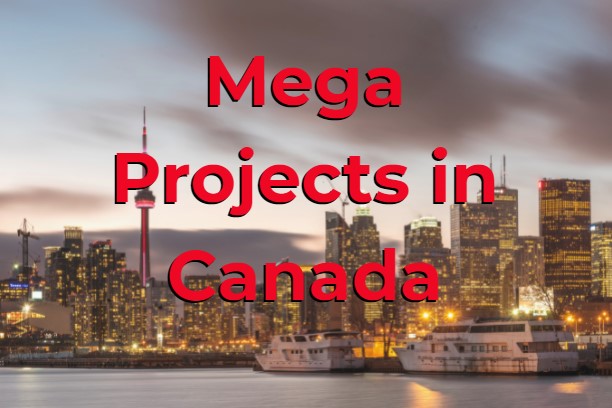
According to BTY Group’s 2020 Market Intelligence Report (MIR), private and public sector mega projects and near-record immigration will help sustain construction activity in Canada amidst an anticipated global slowdown. Canada’s mega-projects extend from coast to coast and a wide range of sectors, including energy, petrochemicals, commercial development, mining, transportation, and social infrastructure.
Canada has many projects in the works with price tags in the billions, especially in transportation and infrastructure segments. The report elaborates that “Infrastructure, renewable energy and industrial building are forecast to be the top performing sectors, with mega projects in B.C., Quebec and Ontario counterbalancing declines in commercial and leisure sectors. Investment in renewable energy is the bright spot in Alberta, which, like most provinces, is also increasing investment in infrastructure to boost the economies.”
Climate change initiatives are spurring investment in renewable energy and energy-efficient infrastructure across the country, while transit oriented development (TOD) is becoming a go-to solution for cities across North America, especially in Toronto, Montreal, and Vancouver in Canada.
According to BuildForce Canada’s annual Construction and Maintenance Looking Forward national summary, “Canada’s construction employment is expected to strengthen in 2021 and resume an upward trend following the pandemic-induced declines experienced in most provinces in 2020.” Learn more about some of Canada’s largest major projects below.
Top 5 Mega Projects Across Canada
1.) Metrolinx’s Eglinton Crosstown LRT – Toronto, ON
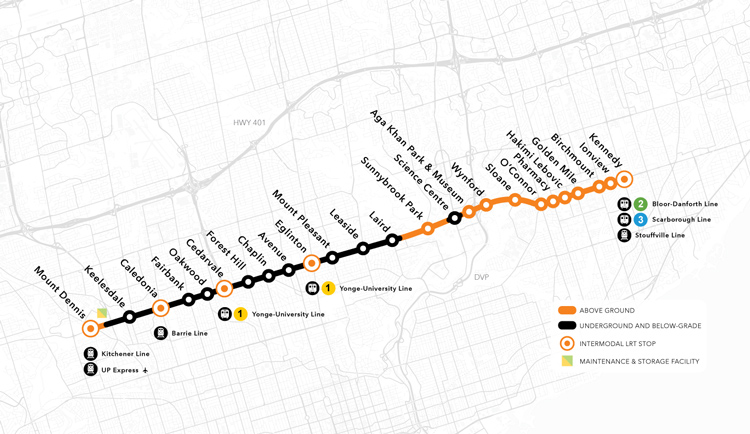
Courtesy of Metrolinx.
Metrolinx has many mega-projects underway in various stages in Ontario. One of the most expensive projects underway is the Eglinton Line (also known as Crosstown) at $4.9B CAD.
The Eglinton Crosstown Light Rail Transit (LRT) project is creating a midtown connection between East and West Toronto. It will have 25 stations along the route between Kennedy (east) and Mount Dennis (west), making the travel time up to 60% faster than before. The project is currently under construction, and is creating thousands of design and construction jobs. In 2022, the Crosstown will open as Line 5 Eglinton.
Line 5 Eglinton is owned by Metrolinx and operated by the Toronto Transit Commission (TTC), and upon completion will be the fifth route of the Toronto subway system.
With transit oriented development, the public sector typically benefits directly from increased transit ridership, revitalized neighborhoods, and a rise in economic development. Meanwhile, private sector developers often see increased land values, higher rents and real estate performance, and more affordable housing opportunities.
2.) GNL Quebec’s Énergie Saguenay LNG Complex – La Baie, QC
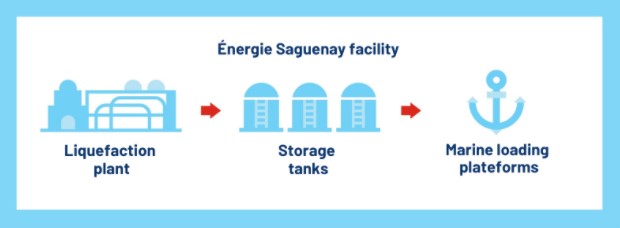
Courtesy of GNL Quebec.
GNL Quebec’s Énergie Saguenay project has been in development since 2014. The mega project involves the construction of a natural gas liquefaction complex at Port Saguenay. Ultimately, if it goes into construction, the project’s goal will be to export 11 million tons of liquefied natural gas (LNG) annually. The $9B CAD project would include liquefaction equipment, storage facilities, and marine shipping infrastructures.
The Énergie Saguenay LNG Complex will be the world’s first LNG facility of such magnitude to be powered by hydroelectricity from a pre-existing local network and is slated to be operational in 2026. A new 750-kilometer gas pipeline would link the western Canada natural gas supply to the facility, then to the main transportation system in northeastern Ontario.
3.) Vancouver International Airport Expansion – Vancouver, BC
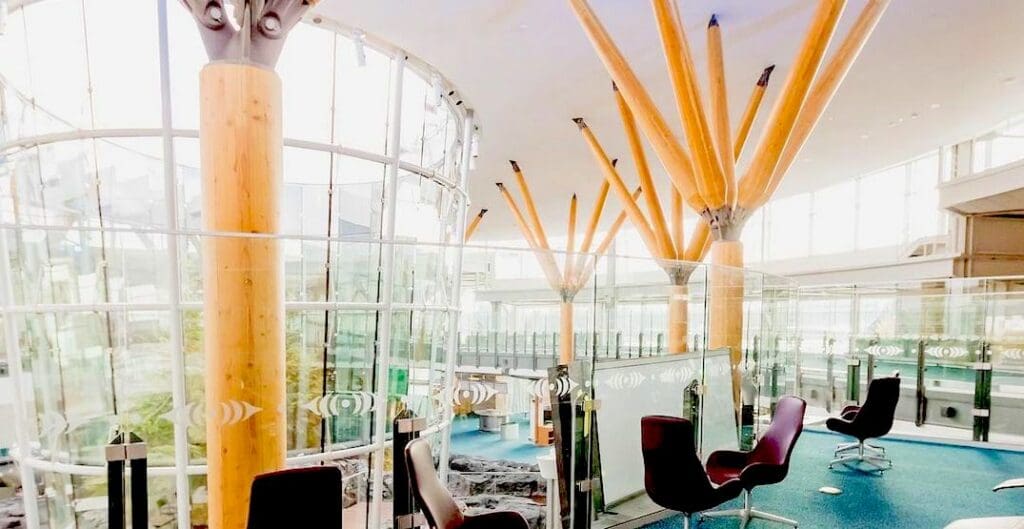
Courtesy of Vancouver International Airport.
Vancouver International Airport (YVR) located outside Vancouver in Richmond, British Columbia, is expanding and updating per its YVR 2037 Master Plan. The Transport Canada owned airport is the second busiest Canadian airport, and the expansions taking place in phases through 2037 have been established to help keep it meeting passenger demand and make it a top-notch connecting hub.
Passengers using the airport are expected to reach 35 million by 2037 (in 2017 there were 24.16 million passengers at YVR). Passengers travelling between the US and Canada specifically are anticipated to increase rapidly, reaching 8.4 million by 2037. To accommodate the increase in passengers and cargo movements through the airport, the Vancouver International Airport Authority will carry out 75 major developments by investing approximately $8.8B CAD.
4.) Nauticol Energy’s Methanol Facility – Grande Prairie, AB
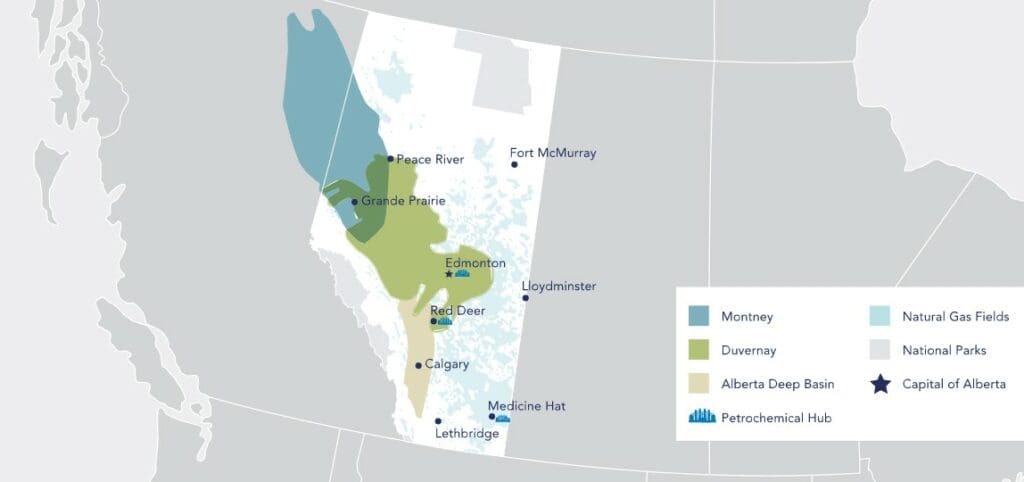
Courtesy of Nauticol Energy.
Nauticol Energy is building a world scale methanol production and distribution facility to supply the growing global demand for low carbon methanol in Grande Prairie, Alberta. According to Nauticol, Net Zero, Blue Methanol, in energy applications, is an essential part of global commercial, societal and government objectives to reduce global CO2 emissions.
Blue Methanol is produced using Carbon capture & storage (CCS), which involves capturing and compressing waste CO2 at the plant site and injecting it deep into contained geological formations where it is permanently and safely sequestered. The $3.2B CAD methanol facility project will help create approximately 5,000 construction jobs and 200 operation jobs during the decades that the plant will be in operation. By 2040, the site in which the facility will be situated (called Montney) is projected to produce over half of Canada’s natural gas.
5.) The Réseau Express Métropolitain (REM) – Montréal, QC
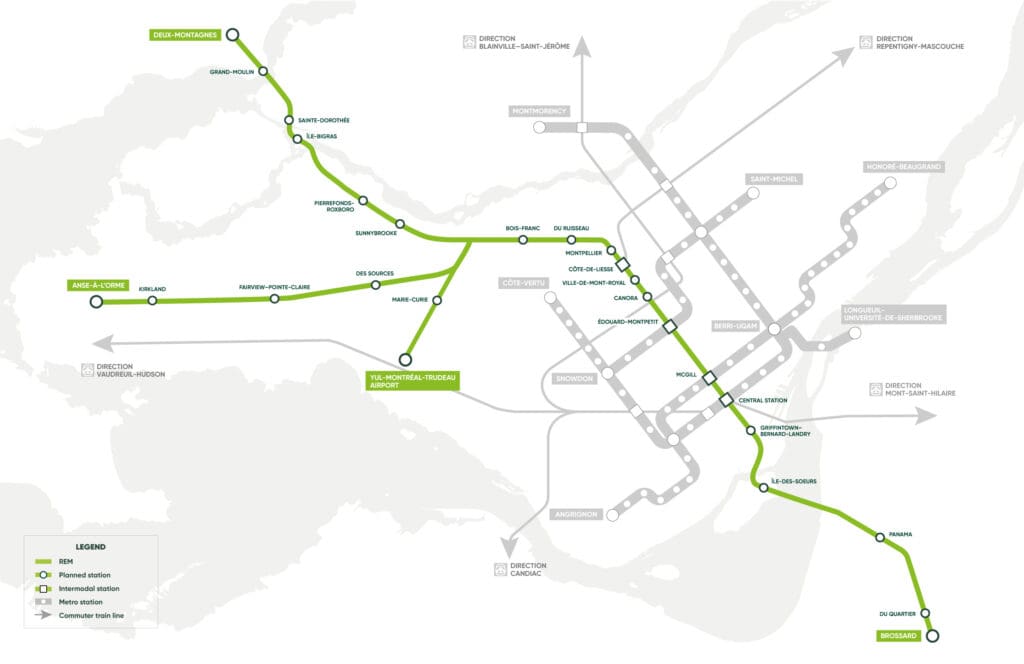
Courtesy of Réseau Express Métropolitain (REM).
Also known as the Metropolitan Express Network in English, the Réseau express métropolitain (REM) is a $6.5B CAD major public transit project currently under construction in the Montréal area. Upon completion, the light rail network will comprise 26 states and 67 kilometers of track that run 20 hours a day, 7 days a week through Greater Montréal. It will also include a link to the Montréal-Trudeau International Airport.
This project is nearly doubling the current metro network (which is 71 kilometers of track), and is expected to start running its first trains in 2022. The REM is being carried out by NouvLR, and is expected to be fully completed in 2023.
More TOD benefits the public sector sees include reduced traffic congestion, pollution and fuel consumption, reduced sprawl which protects open-space, lower costs for roads and bridges, and increased property and sales tax revenues. The private sector benefits additionally by generating higher retail sales, expanding labor pool access, and reducing parking costs.
As Canada continues to start and complete these and other major infrastructure, transportation and energy projects to better future generations, we hope to remain alongside them! Many Canadian organizations utilize ARES PRISM on their major projects to help manage project costs and deliver massive projects like these on-time. Request a demo of ARES PRISM project controls software here.